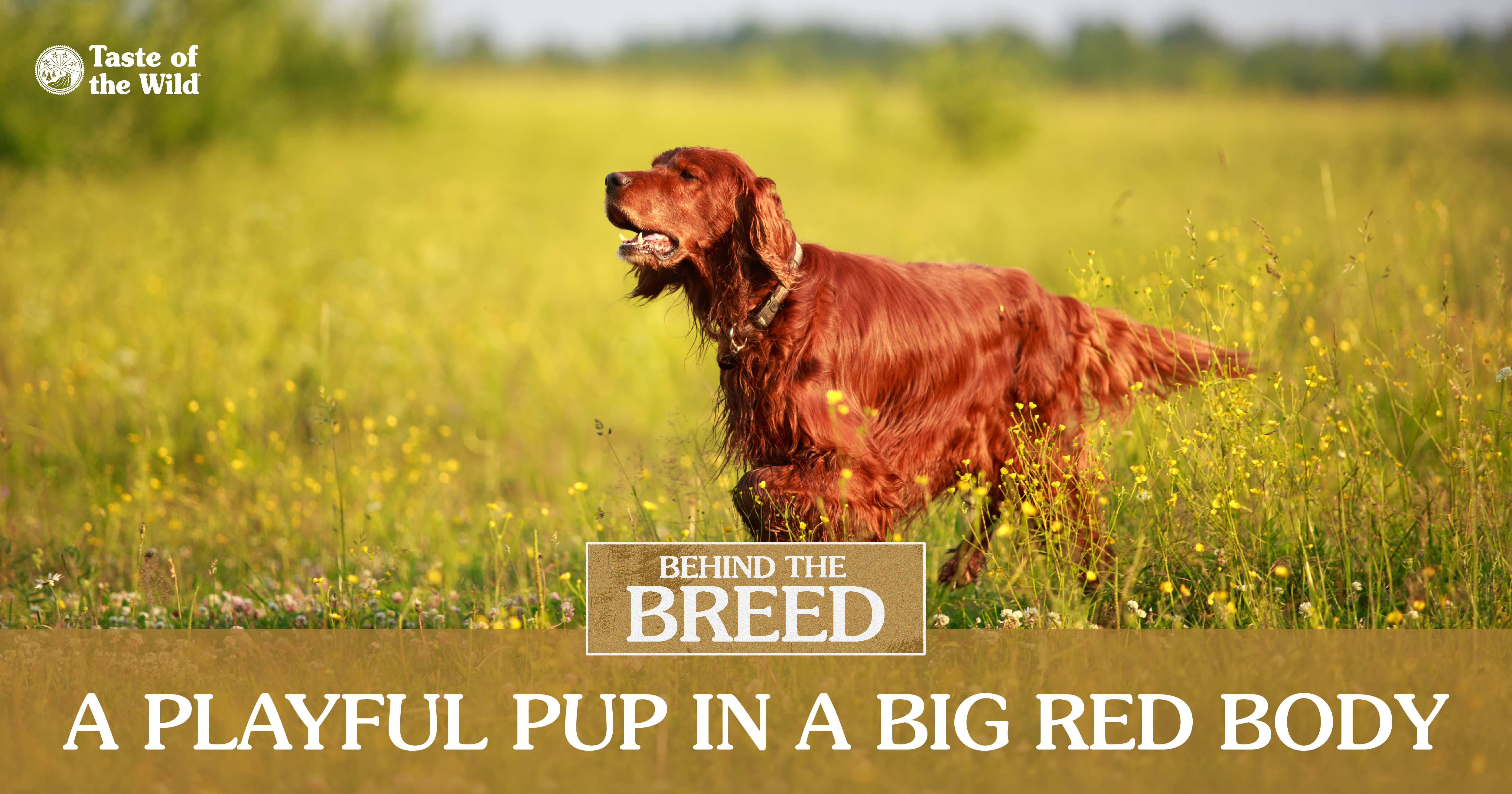
It’s no surprise that Irish setters originated from Ireland. They were bred to sniff out gamebirds for hunters and quietly announce their success by “setting” (lying down on their tummy). Their vibrant red coats made it easy for hunters to spot them across fields, although they weren’t always a solid red color —the original Irish setters were actually red and white.
Irish setters are friendly, affectionate, lively dogs that, like Chesapeake Bay retrievers, make wonderful family pets as well as reliable hunting partners. They’re great with children and love to be involved in an energetic family’s outdoor activities. However, their playful, boisterous nature, paired with their large size, means you’ll probably need to shield little kids from an accidental “Big Red” bump.
Irish setters are large dogs (weighing 60–70 pounds as adults) and typically live into their early to mid-teens. They are usually healthy but, like other deep-chested breeds, they can be susceptible to bloat or stomach twisting (called gastric dilation-volvulus).
If your idea of exercising a dog is a game of fetch in the backyard, that’s not going to cut it with an Irish setter — and a bored Irish setter can lead to a naughty Irish setter. Ideally they should be allowed to run their energy out over a long distance. Sports like agility, flying disc or tracking are great for temporarily tiring out Irish setters, and as they were bred to be hunting partners, they like games that use their brain, too.

RELATED POST: Behind the Breed: Greyhounds
The information in this blog has been developed with our veterinarian and is designed to help educate pet parents. If you have questions or concerns about your pet's health or nutrition, please talk with your veterinarian.
